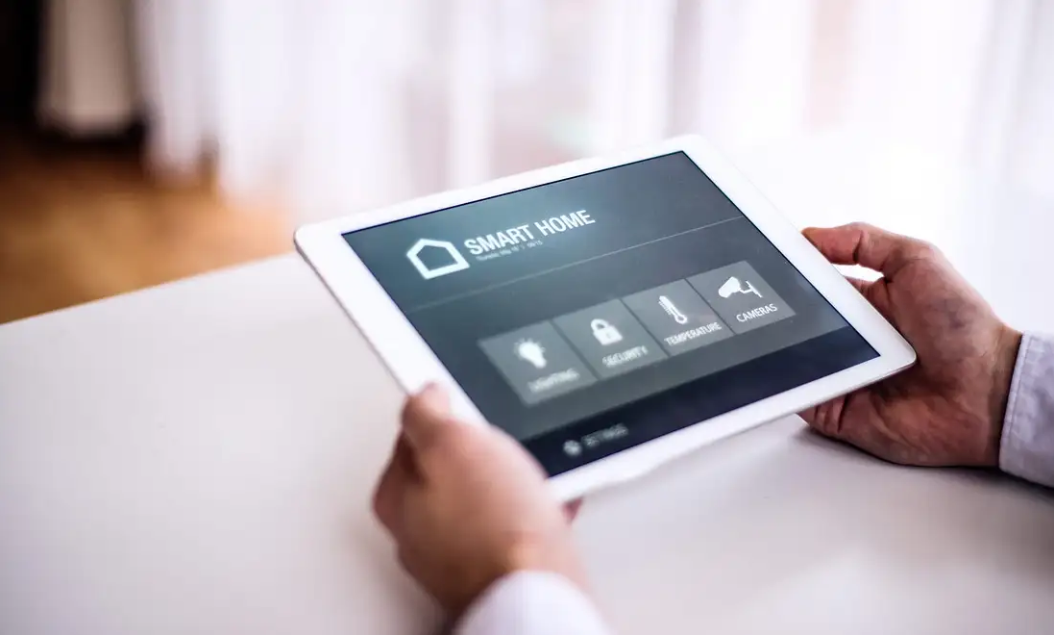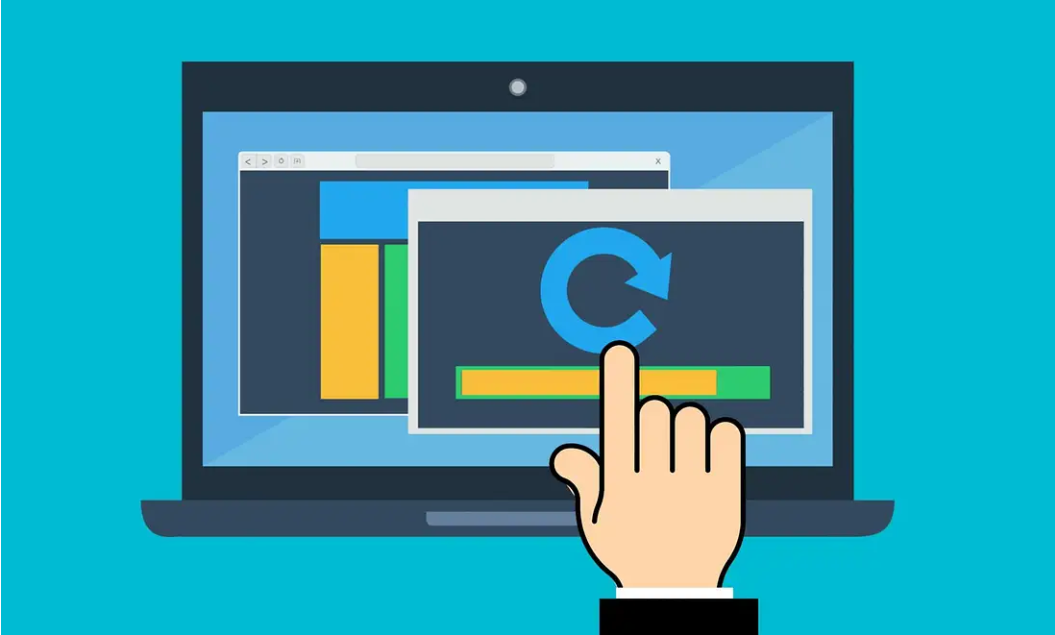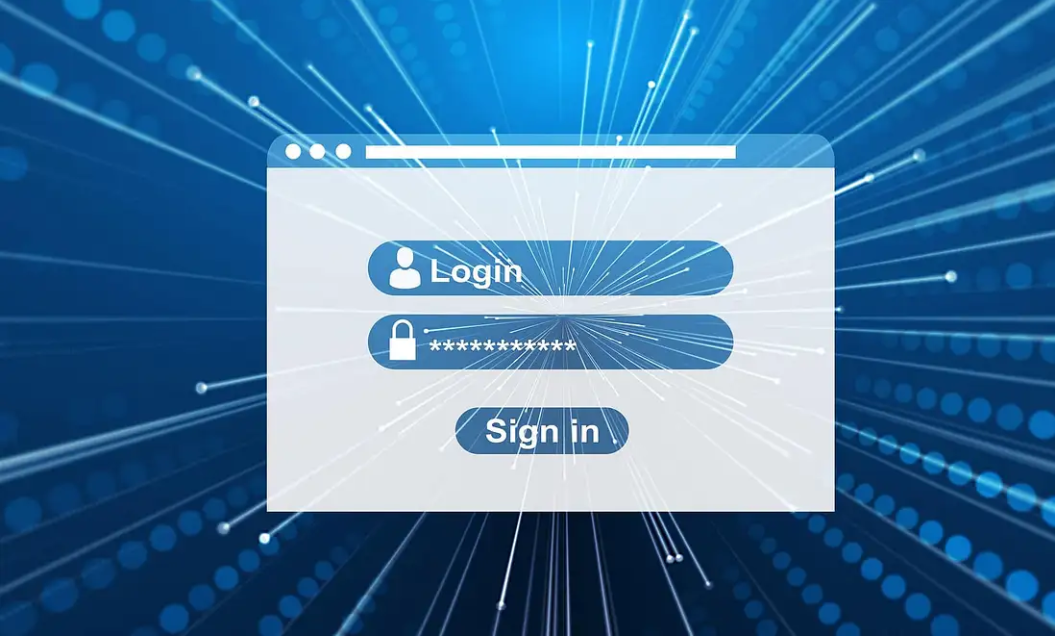So, you have finally decided that the days of turning on your appliances yourself are ancestral! “I am no longer a caveman!”, you say to yourself as you yell at your Alexa to play that one song you haven’t been able to get out of your head all day. However, what you may not know is that those who have “home automation” have taken numerous hours planning, configuring, and testing to have everything work correctly and reliably. Home automation is the future, but if you want to take part, you must have a carefully laid out plan, as well as the tools and knowledge to do so correctly. What makes having a “smart home” so wonderful is that at any given point you can decide to add or remove smart devices at your leisure! The possibilities are only limited to how far we have come technologically speaking! Many of the devices you find in a home today are made with the idea of setting up a “smart home”. Regardless if you have an iPhone and Android device, you can take part in having a “smart home”. Even Amazon has their device, Alexa, that has been designed to be used with home automation. However, these devices are not plug and play. Time must be set aside in order to properly prepare your home. If you are still reading, it probably means you are interested in learning about what you will need in order to take your lame home to “Smart Home”! Well, I have good news and some bad news. The good news is that today you will learn exactly what you need in order to do so; the bad is that it doesn’t come cheap (if you want it done correctly). The following is what you’ll need: A Plan: First come up with a plan. What do you want to be automated? Do you want all the light in your home automated or just the ones in the living room? Do you want parts of your home left out, such as the garage, but have the rest automated? Figure out what you want to be automated and where before purchasing anything! Chose a Controller / Hub: Decide what you are going to use to control all your smart devices! You have many choices so make sure you pick one you are most comfortable with. Do you enjoy Amazon? Perhaps Alexa is the choice for you. Do you favor Google? Google assistant is a great way to have your Android Device as a controller! Maybe you fancy iPhone; Apple is another great way to use your phone with your “smart home”. Perhaps you want to use a different brand not associated with a major corporation; then you should look at Wink! Are you loyal to Samsung? Well, have I got news for you! Even Samsung has its smart hub controller for you to utilize: SmartThings. Make sure you take your time when decided on which controller you want to use! After all, this is how you will interact with your “smart home” once it is set up; make sure it is the product you are most comfortable with! Wifi-Network: You don’t need the $500 router that has 17 antennas and allows for the NASA quality download and upload speeds, but you will need quality! With quality comes a stronger, more stable connection with a wider range. Consider investing in a nice router from Asus or TPlink! We guarantee you will have a better experience if you do! Schedule: As we said earlier, setting up “smart home” takes numerous hours of planning, configuring, and testing to have everything work correctly and reliably. There is no easy road when it comes to home automation. If you want it done correctly, set aside time so that you can ensure it works! If you don’t have time, consider higher someone who can do it for you! I hear Hammett Technologies is good at setting up smart devices and networks! What You Can Do with a Smart Home Now that we have all a plan set in place, have decided which controller we want to use, have purchased a reliable router for our network, and have time on our hands, we can begin to play around with smart devices! There are countless devices out there today that can be used with a smart home. Everything from lights to those cute robot vacuum cleaners, just about anything can be set up for use in a “smart home.” Below are some of the possibilities, and this is just scratching the surface! Possibly the most popular smart device to buy is the lights! Philips Hue lights are a great example of this, although there are cheaper options out there that do the same thing. Hue bulbs allow the user to set timers for when they come on and even have RGB capabilities; perfect for those “set the mood” moments. Next, we have the thermostats! These are great for those who are often away from home for long hours and wish to keep the gas & electric bill low! You can have the thermostat lower the temperature while you are away and raise it while you are on your way home! This way, during those cold winter nights, you can come home to a warm house, without having to keep it warm all day! Or perhaps you are cold in bed and don’t want to get up! You can raise the temperature right from your bed and eliminate that chill in the house from under the covers! Last but not least are Smart Locks! Do you worry about packages getting stolen? Do you want to see what happens to your home while you are away? Get a Smart Lock! You can feel confident with one of these installed on your door. Many come with cameras nowadays and allow you to create virtual keys for family and friends! No more trying to find your keys in the dark, hold your
On a Windows machine, there are multiple ways of taking a screenshot. However, there are plenty of users who are still unsure of how to do so. Today we will review a few ways Windows users can take a screenshot on their PC. Snipping Tool Since 2002, Microsoft has implemented the snipping tool into its Windows machines. The tool is simple to use and allows users to capture their screen! However, Microsoft hides this tool from plain sight, leaving the tool undetected to new users. Navigate to the Start Menu Type “Snipping Tool” Select “New” and begin capturing your screen! Once you have selected “New”, a white filter will appear over your screen. Click and drag your mouse across the area you wish to capture. Microsoft has confirmed that in a future update, the Snipping Tool will be getting a new home! Snip & Sketch, very similar to the Snipping Tool, has an improved user interface (UI) and a built-in shortcut to activate it on Windows 10 machines (Windows Key + Shift + S). However, it is important to note that Snip & Sketch is still in development, therefore bugs may still be present in the software. To launch Snip & Sketch, either use the shortcut (Windows Key + Shift + S) or search for in the Start Menu (Figure 1).Figure 1Figure 2 Using the shortcut will allow you to immediately begin taking a screenshot. Searching for the program in the start menu will bring you to a home screen for Snip & Sketch (Figure 2). If you choose to search for Snip and Sketch in the Start Menu, the steps are the same. Simply choose “New” and begin to capture the desired area of your screen. Third-Party Apps While the built-in screen capture tools are nice, there are some third-party applications that I find to be much more reliable and easier to use. For example, Greenshot is a free, lightweight, program that is great for screenshots. In fact, its how I built this guide! Download Greenshot from their website: https://getgreenshot.org Once downloaded, either navigate to your system tray (“ ^ “ icon on the bottom right of your screen) and locate the Greenshot application. A shortcut is also available after installing Greenshot. Simply press the “PrntScr” key on your keyboard to enable immediate screen capture. You may have to press and hold the Function Key “Fn” on some keyboards in order to activate “PrntScr”. Once you have click on the Greenshot application in your system tray, a menu will appear with a list of options. Select “Capture region” to begin your screen capture. If any of the above confuses you, please do not hesitate to reach out to us with questions! We are more than happy to help! We have techs standing by to assist you with the day-to-day operations of your machine! If you are curious as to how we can assist your company to grow, click here!
Microsoft is pulling the plug on its widely loved operating system (OS), Windows 7, in January 2020. Therefore, it is important that you know how to upgrade to their latest OS, Windows 10. Why should you upgrade? Well, when Windows 7 gets discontinued, Microsoft will no longer offer support or update the OS, leaving you vulnerable to exploits and other security risks. Those of you that are worried that Windows 10 will have a steep learning curve, fret not! Windows 10 is very similar to its older brother Windows 7. I have to admit, there are a few differences between the two, such as Windows 10’s revamped settings panel, and the new start menu. However, if you are worried that Windows 7 and Windows 10 would be polar opposites like Windows 7 and Windows 8, rest easy, nothing could ever be that bad again. This guide aims to ease you through upgrading your OS. Once you finish with these steps, you’ll be well on your way to Windows 10! Check List Minimum Requirements for Windows 10 If you are worried you may be on this list, think about the following question. Did you purchase your computer after 2014? If you answered yes to this question, chances are your machine is more than capable of running Windows 10. For those of you running older machines, consider purchasing a new computer. Many of them come preloaded with Windows 10, and besides the upgraded OS, you will also be greeted with high speeds, better resolution, and overall better user experience. Processor 1GHz or Faster CPU or System on a Chip (SoC) RAM 1GB for 32-bit or 2GB for 64-bit Hard Drive Space Existing installations: 16GB for 32-bit or 20GB for 64-bit. Clean installation or new PC: 32GB or larger Graphics DirectX9 or later with WDDM 1.0 driver Display Resolution 800 x 600 Network Wi-Fi or Ethernet connection Before upgrading it is also important that you have the latest version of Windows 7 installed on your machine as well. Be sure to check for updates on your machine and to download the “Windows 7 Service Pack 1” if you do not have that already installed on your machine. Also, and it pains me to say this to you if you have waited this long to upgrade to Windows 10, it is no longer free. However, online retailer Newegg will make the upgrade expense less painful for you by offering both the Home edition and Pro edition of Windows 10 at a discounted price! The cost of a new Windows 10 license goes for $109.99 (Home) and $149.99 (Pro) on Newegg. Furthermore, make sure you have an up-to-date backup or system image of your computer before upgrading. Microsoft has certainly improved in its upgrade process, but it is better to be safe than sorry. Follow this guide on Bleeping Computer to learn how to create a backup of your Windows 7 computer! One last thing, I promise. Before you start, it is recommended that any anti-virus software you have installed be removed as this can sometimes cause interference with this upgrade. Make sure that all peripherals are also unplugged from the computer while it is updating, as these too can sometimes cause errors. Upgrading Download and Install the Media Creation Tool Make sure you have your Windows 10 license activation code ready Double-click on the MediaCreationTool.exe to begin the Windows 10 upgrade setup Accept the licensing agreement Select “Upgrade this PC now” option and the necessary files will begin downloading to begin the upgrade. Once finished, click Next Enter your valid Windows 10 product key (Home or Pro) Select Next Accept the licensing agreement Select “Keep personal files and apps” option Select Install Are you wondering what Hammett Technologies can do to continue to help your company grow? Our team of trained professionals works diligently to ensure that your network continues to run smoothly and securely! Click here to learn more about what we do!
Chances are, if you have had a Windows PC, you have noticed that Microsoft loves to pre-load them with software you will never touch. This bloatware takes up unnecessary space and is a general annoyance to look at! Today, we will go over three in-house methods and one 3rd-party software method to uninstall programs from your computer! Using Control Panel The tried and true method of removal is an oldie but goodie! To get to the Control Panel all you must do is click on the Start Menu and type “control panel” and press enter! You should be created to a window like this……or this: *You can switch between both views depending on your preference using the “View by:” option in the upper right-hand corner of the window. Now that we have cleared up any confusion, look for the button labeled either “Programs and Features” and select it. Or if you are sorting by “Category” find the button labeled “Programs” (1). Directly beneath it you will see “Uninstall a program” (2), which if selected will take you to the same place. Once there, you will be greeted with a full list of all the programs currently installed on the PC. Clicking on one of the programs will reveal a list of options along the top bar, one of which will allow you to uninstall the selected program! If you are curious as to what “Powerful Uninstall” is, we will touch base on that when we reach the 3rd-party uninstall application section. Using Windows Settings A quicker, and just as good of a method for removing a program from your computer is using the relatively new Windows Settings. To view Windows Settings, open your Start menu the same way we did before, but this time locate and select the gear! Once selected, you should be greeted with “Windows Settings”! Now look for the “Apps” button and select it. Once selected, you will once again be shown a full list of all installed programs on your computer! Simply click on one and the uninstall option show appear! Using the Start Menu The quickest, yet most restrictive way of removing a program is through the start menu. This method only works for programs that you have pinned to your start menu. To use this method, first, open your start menu and right-click on any application (on the left-hand column or the squares on the right)! Third-Party Software There is plenty of third-party software out there that can also assist you in uninstalling programs from your machine, especially those pesky programs that always seem to stick around no matter how hard you try to get rid of them. One of my favorite programs is IObit Uninstaller. Completely free and easy to use, the program works similar to the first two methods shown earlier but ensures complete file deletion. If you are having any trouble understanding or following the guide, send us a message! We are more than happy to assist you in uninstalling a pesky program. If you are a business owner, click here to find out how we can help your business grow and stay secure!
Windows 10 has become quite an impressive operating system of the years. This continued improvement has benefited all users across the board, but it important to perform maintenance on the system. By checking your system for updates regularly, you can ensure that all your peripherals and programs continue to operate properly and keep your system running smoothly! The added benefit of regularly checking for updates is that you also make sure your system remains patched for the lastest exploits and bugs, helping to keep you out of the reach of hackers and other cybercriminals. Checking for Updates The process of checking for an update is painless, even for a novice user! 1. Open the Start Menu 2. Locate the in the Start Menu and click it. 3. Once in Windows Settings, locate Update & Security and select it. 4. You’ve made it! Select Check for Updates to make sure your system is up to date! If you are still confused about how to update your Windows 10 computer, consider reaching out to us! Our team of trained professionals can handle any issue you encounter on your computer, whether big or small! We are more than happy to assist you with updating your machine to ensure you always have the latest and greatest build of Windows 10! Wondering what we can do to help your company grow? Click here to find out more!
If you are like most computer users, you have a small armada of passwords for the plethora of accounts you have. With that many accounts and passwords surely, things will be forgotten and lost. Then you must go through the hassle of continually resetting the password every time this occurs! Now you could opt to use similar passwords for all your accounts, but then you run the risk of not just one but all your accounts being compromised. Or you could use different passwords for every website and always click the “Remember Me” button. Still, again, if some unauthorized user accesses to your machine, they have no issue logging in to all your accounts. I know what you are thinking, “Why don’t I just write them all down?” That is a good idea; however, are you willing to carry that book with you everywhere you go? What if you lose it at the house or lose it when you are out in public? Thankfully, there is help. Password managers enable you to keep track of your passwords and accounts without having to remember them all. The added benefit is that password managers can create extremely complex passwords for your accounts, ranging from 20+ characters, including symbols, numbers, and capital letters! Furthermore, most password managers have an autofill feature, meaning you no longer have to use “Remember Me.” What’s the catch? There is none! The only password you are responsible for is your “Master Password,” so make sure it is incredibly secure! You will use this master password to log yourself into the password manager, granting you access to all your passwords and accounts. One of our personal favorites is LastPass. LastPass flawlessly integrates with most browsers (Chrome, Firefox, Opera, etc.) as a browser extension. But don’t take our word for it, go and give them a try! If you are worried about LastPass getting breached, a legitimate concern to have, worry not. LastPass does not personally store your passwords. While they may be stored on a server LastPass owns, the passwords are encrypted to ensure that even in the event of a data breach, hackers cannot uncover anything that may damage users. If you are worried about password managers, please do not hesitate to reach out to us! We are more than willing to answer any questions you may have to help ease your concerns. I think password managers are great. They allow the user to create extremely complex passwords without the worry of having to keep them written down or stored in one’s memory. They make the day-to-day web browsing much more comfortable and more convenient.
Is your PC slow to startup? This is a common issue for many users, and the fix is more straightforward than many imagine. When it comes to Windows, applications, for seemingly no reason, set themselves up to launch when your PC is booting. While there are specific programs that you would want to launch at startup, such as antivirus software, many programs that do launch at startup are not needed, and depending on the size of these programs, the speed at which your PC boots can be significantly affected. Microsoft is aware of this, however, and has offered a remedy for this issue for some time now. Windows offers the user the ability to customize what application launch at startup, allowing them to disable and enable which program will run when the computer is first started. To begin customizing your startup applications, you can either go through Task Manager or Settings. Task Manager will offer you a bit more information, but both offer the same end goal: making your PC boot faster. Using Windows Settings to Disable Startup Applications As I stated earlier, those of you that go through Windows Settings to customize your PC’s startup application will have a more basic experience but will ultimately achieve the same end goal: a quicker startup. In order to navigate to this menu, follow these steps: 1. Locate your Start Menu: This will be in the bottom left-hand corner of your screen 2. Locate settings “.” 3. Upon clicking the gear, you will be taken to the “Windows Settings” page. From there, locate and select “Apps.” 4. Locate and select “Startup.” If you have made it this far then take a second to accept the round of applause because you have successfully navigated to the correct page! All right, that’s enough celebrating. From here, you will be able to select which apps to wish to enable and disable at startup. You may notice that under the “On/Off Switch,” there is an “Impact Indicator.” This is a measurement of the approximate impact the application will have on the startup. When deciding what applications to disable first, look at the ones that have the most substantial impact on startup first because they yield the most significant performance increases if disabled. Using Task Manager to Disable Startup Applications If you are looking for a little more information regarding your system’s boot time and applications running at startup, using the Windows Task Manager is the best place to be! It allows you to quickly research applications you are unfamiliar with, making it easier to decide which apps can be disabled and which are better left alone. To get to the Task Manager, right-click on any empty space on the taskbar. In the popup menu, click on “Task Manager” (third from the bottom). * If your menu appears like this… …click on “More details.” The result should look something similar to this: Once you have the Task Manager, navigate to Startup, which should look something like this: From here you can see all the applications that launch when your computer starts. On the surface, Task Manage appears to be quite similar to Windows Settings. However, if you right-click on an application in Task Manager, you can gain further insight into what the application is. A right-click allows you to disable/enable an application, navigate to its file location, search online for the program for more information, and inspect the application’s properties. Adding a Boost to Startup Now that you know how to disable startup applications get to work! If your PC takes a long time to boot, the culprit may be a few application, with a high impact, launching when your computer first starts. However, make sure you research the application you are disabling before you do so. Some applications, like the “Sound Blaster Control Panel,” is an application I use for better audio control on my computer. For my convenience, I leave the application on, even though it has a moderate impact on startup! Make sure you understand what you are disabled before you do so, or your PC may encounter slight errors when booting. If you have any questions, do not hesitate to reach out to us!
The internet can be a dangerous place. Therefore, as we traverse the digital landscape we must always stay on high alert! Recently, a new type of phishing email has hit our digital world. Be one the lookout for emails that are from my-sharepointdrive@notification.messages365.org. At first glance, this email appears to come from Share Point, giving oneself a false sense of security, but do not be fooled! This email, if opened, will contaminate your computer. This false sense of security is only further by the header of the message reading “This mail is from a trusted sender.”. If you receive a message that looks like this, do not open the attachment! When you receive a suspicious email, always make sure to carefully go over the sender information. Ask yourself these questions: “Do I know this sender?” and “Does this email pertain to something I am familiar with?”. Even if you can answer “yes” to both questions, you should remain vigilant. Always be on the look out for anything that is out of place or suspicious. By playing it safe and paying attention you will save yourself both time and money! At Hammett Technologies we put your online security as a top priority. Be with a team you can trust, become a Hammett Technologies Partner today!
The most recent breach of Facebook, resulting in 50 million accounts hacked, has the corporation in the spotlight once again and for the wrong reasons. To help those who fear they may have been hacked, the Fox 45 Morning News team asked our Owner and CEO, Charles Hammett, to come on and provide his expert knowledge concerning cyber security and help explain to viewers what they can do in order to prevent these attacks from happening. Watch the video below to find out more! At Hammett Technologies the security of our client is our number one concern. With help from our certified team, you can have faith that your company’s users and data are kept safe and secure.






